Tomatoes are one of home gardeners' favorite vegetables, but also one of the most troublesome. They can be the host of many pests and diseases as their nutritional requirements are quite large. We call them "heavy breeders". Yellow leaves can be a sign of many different problems, from nitrogen deficiency to over-watering to herbicide damage, Below are several reasons. Check out what's the reason of your yellow leaves and take potential solutions up.
Nutrition Deficiency
The common reason of yellow leaves is nutrition deficiency. Tomatoes are heavy breeders, need a large amount of nutrition to grow healthily and set many fruits.
Although lack of nitrogen is usually the cause of yellow leaves, it is important to correctly determine which nutrients are lacking before using high-nitrogen fertilizers. Excessive amounts of certain nutrients can lead to deficiencies in other nutrients. To clarify exactly what your tomatoes need, determine where the yellow leaves are on the plant and which parts of leaves turn yellow, and then perform a quick soil test to determine exactly what nutrients your tomatoes need.
Some symptoms of nutrient deficiency can appear on the lower old leaves of the plant. This means that tomatoes are able to transfer nutrients from older growths to new leaves that need these minerals most. Deficiencies in nitrogen, potassium, and magnesium can cause old leaves to turn yellow.
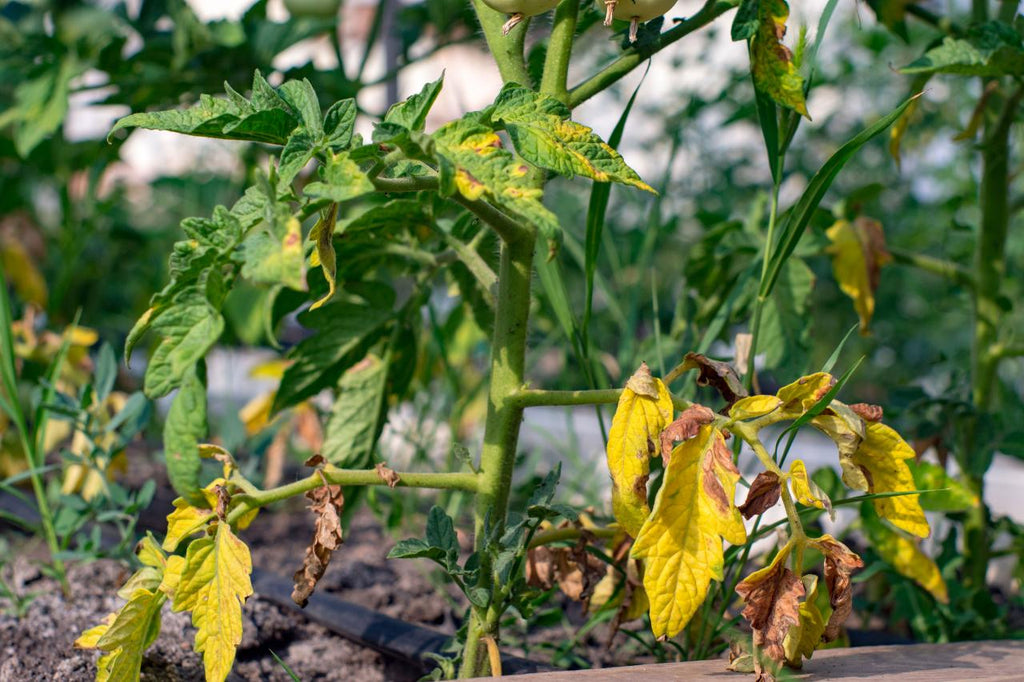
- Nitrogen Deficiency
Lack of nitrogen will cause yellow in tomato leaves. Although tomatoes (like all plants) need nitrogen to grow, it's important not to put too much nitrogen, over will promote lush leaves while sacrifice the growth of flowers and fruits.
-
Potassium Deficiency
Lack of potassium will cause the outer edge of leaves turning yellow before turning brown and looking burned. A good dose of potassium, either in the form of adding fertilizer or what's already available in the native soil, is key to tomato fruit quality and yield.

-
Magnesium Deficiency
Lack of magnesium will grow yellow leaves with green vines. How to resolve it? Please self-made Epsom salt mixture. Mix two spoon of Epsom salt with one gallon water, and spray it on the plants. If we find the right reason, leaves will start to turn green within one week.
-
Calcium Deficiency
Lack of calcium will both cause leaves turning yellow and blossom end rot, where the bottoms of tomato fruits develop large brown or black spots.
Fungal Disease
The one of the unobvious reason of yellow leaves is the illness, several illness will cause the leave turning yellows, among them, many pests will be hard to solve it once your tomatoes got them.
- Early Blight
The first illness called early blight, rose from fungus in the soil. Luckily, this problem will be found easily in low leaves, a pale-yellow spot turning into dark-brown spot and the edge leaves turning yellow. At the end, the whole leaves will become yellow and fall off.

- Septoria Leaf Spot
Another fungal disease may appear some similar markings, we called septoria leaf spot. There are large brown markings in the leaves and combined with yellow. If we do not fix it right, this disease will transfer into the stems of your tomatoes and bring more loss.
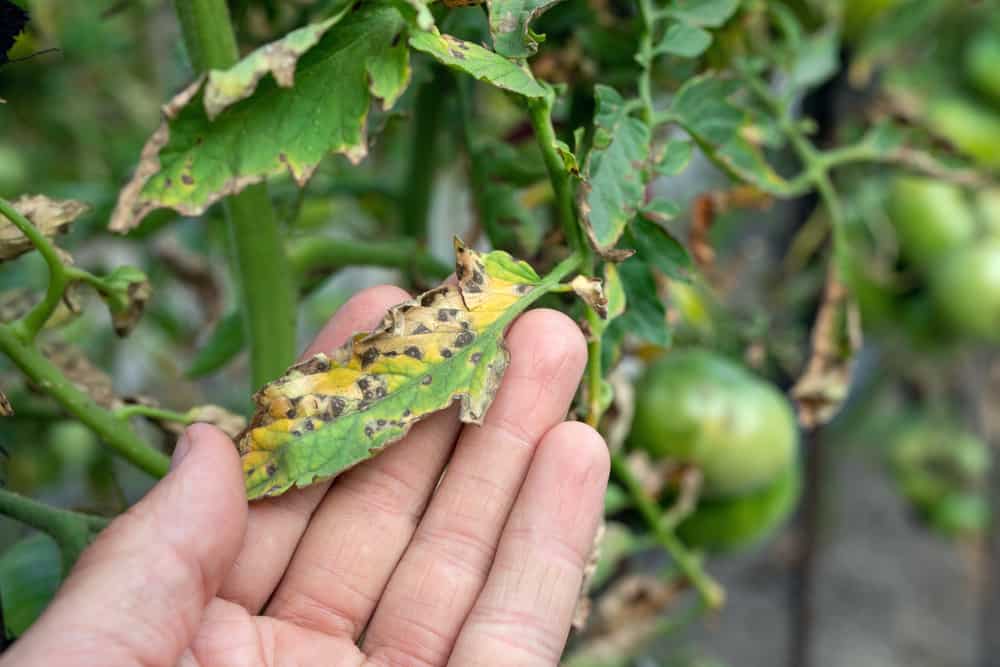
- Fusarium Wilt
Fusarium wilt starts from the soil and then infest the roots, which will prevent to transfer water into the stems and leaves of tomatoes. Even though we water enough, tomatoes still appear wilt, leaves will fall off from tomatoes.
- Verticillium Wilt
Verticillium wilt will trigger pale-yellow spots in low leaves, brown veins outside and finally turn into dark brown. Leaves will fall off from plants.
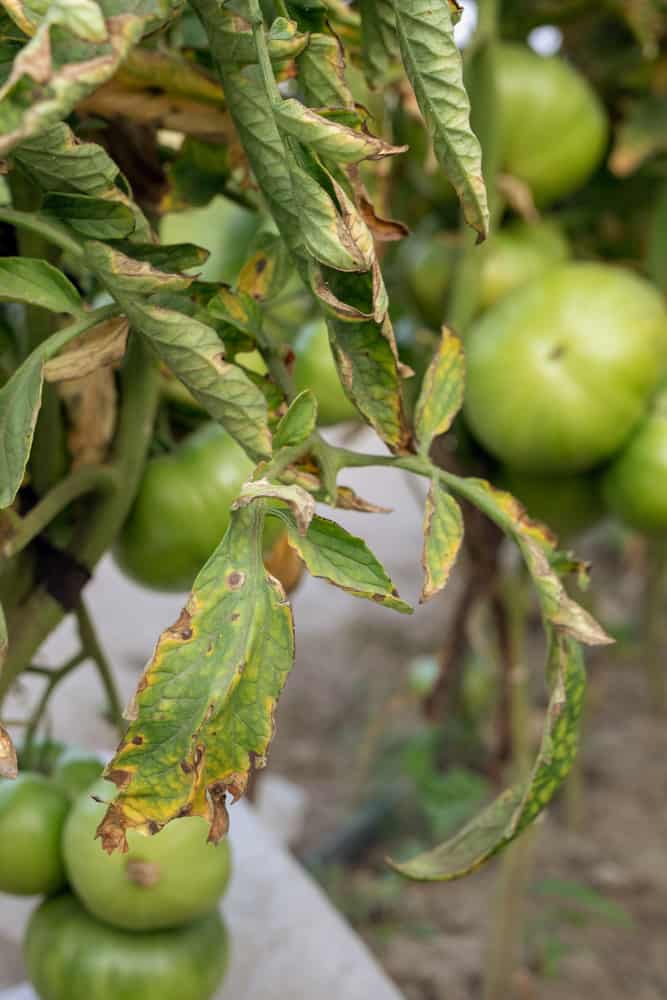
- Bacterial Wilt
Bacterial wilt is less common, is triggered by damp sandy soil. It will always happen in the period of transplanting, but appear in the end of season. Leaves become yellow suddenly and tomatoes begin wilt.
Early blight and Septoria leaf spot can be managed if discovered early. Remove the affected leaves and discard them, keeping them away from other plants in your garden. Apply a fungicide designed to treat the issue, following the instructions on the product exactly until the problem improves.
There are no any way to prevent those diseases, but you can take up some measurements to decrease disinfected rate. Select some plants which have strong immunity, design enough space for each of plants, clean your garden tools to keep a clean garden.
Inconsistent Watering
Inconsistent watering may cause tomato leaves become yellow, gardeners sometimes over-water,the redundant water will suffocate and rot roots. Because damaged roots, oxygen is little in the soil and leaves. At the end, leaves will become yellow and fall off.
To avoid over-water, you can plant tomatoes in fabric grow bags, which have excellent drainage and breathable features.
The correct way to water tomatoes is only to water tomatoes when they need--when top 1-2 inches soil turn dried. It is suggested to water surrounded root soil rather than leaves, in the morning.
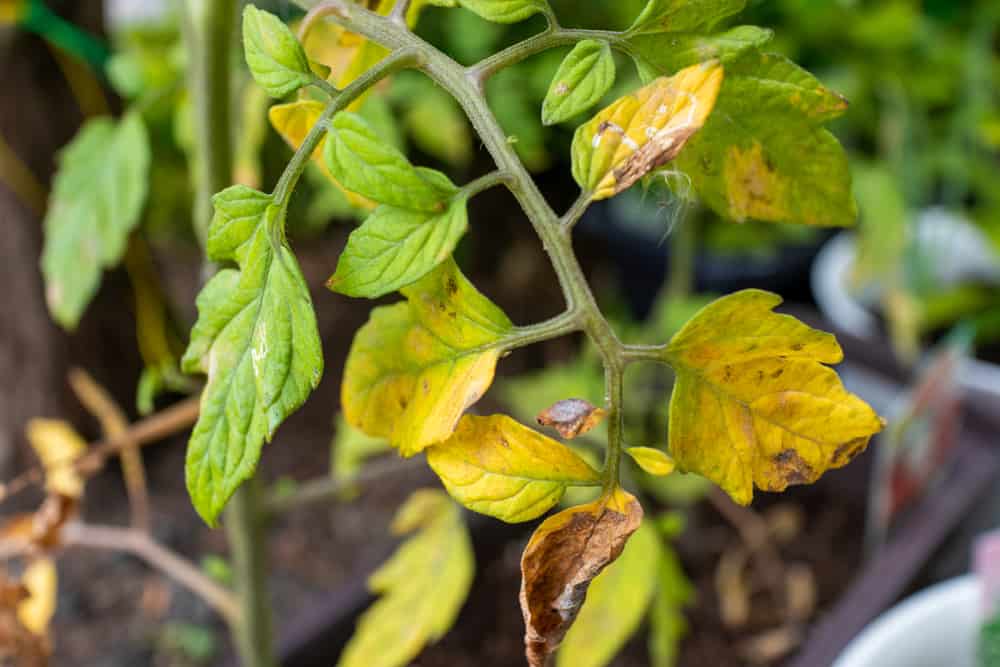
Fertilizer Burn
When it’s time to fertilize your plants, always be sure to follow the directions on the product label. This will ensure that your plants get the nutrients they need with limited fertilizer runoff or damage to your crops. If the label calls for “sidedressing,” that means the fertilizer should be applied next to rather than directly on the plants — usually 4 to 6 inches away from the plants themselves.
Too much of a good thing can actually create problems, and this is certainly true in the case of fertilizers. Adding more fertilizer than the label specifies (either too much at one time or applying too frequently) can burn tomato roots. If you’re growing tomatoes in containers, fertilizers and other salts in the water can build up in the pot, leading to salt injury or fertilizer burn. Water thoroughly until water drains from the holes at the bottom of the pot to wash away excess salts.
Got Sunburned
Mature, mature plants can also get sunburned--especially when it gets hot in the summer. Tomatoes that grow on exposed west and south locations, or near reflective surfaces (such as block walls), may grow better with some protection from shade cloth.
Also, if your tomatoes grow in containers, you can also move them according to the sunlight.
Avoid to Using Herbicide
Controlling weeds is an ongoing chore for vegetable gardeners everywhere. Although it can be tempting to reach for an herbicide (synthetic, organic or homemade), it’s important to keep in mind that tomatoes are incredibly sensitive to chemical weed control. Even if herbicides aren’t applied directly to tomato plants, herbicide drift can damage plants, resulting in stunted yellow growth. Rather than turning to herbicides, manage weeds in the vegetable garden with hand weeding, mulching and spacing plants closely enough to limit weed competition.
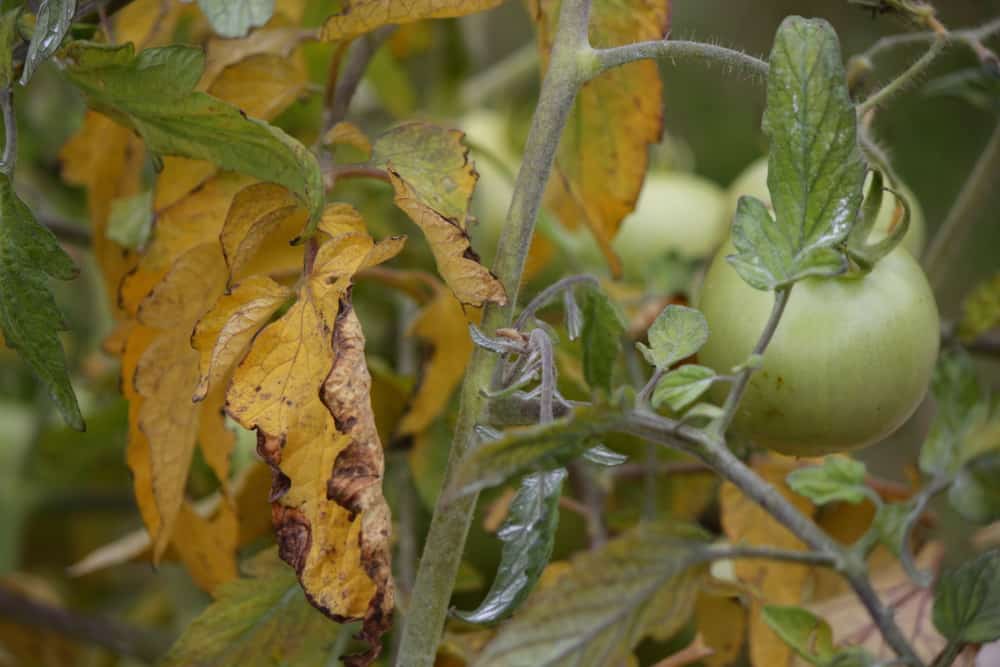

Leave a comment